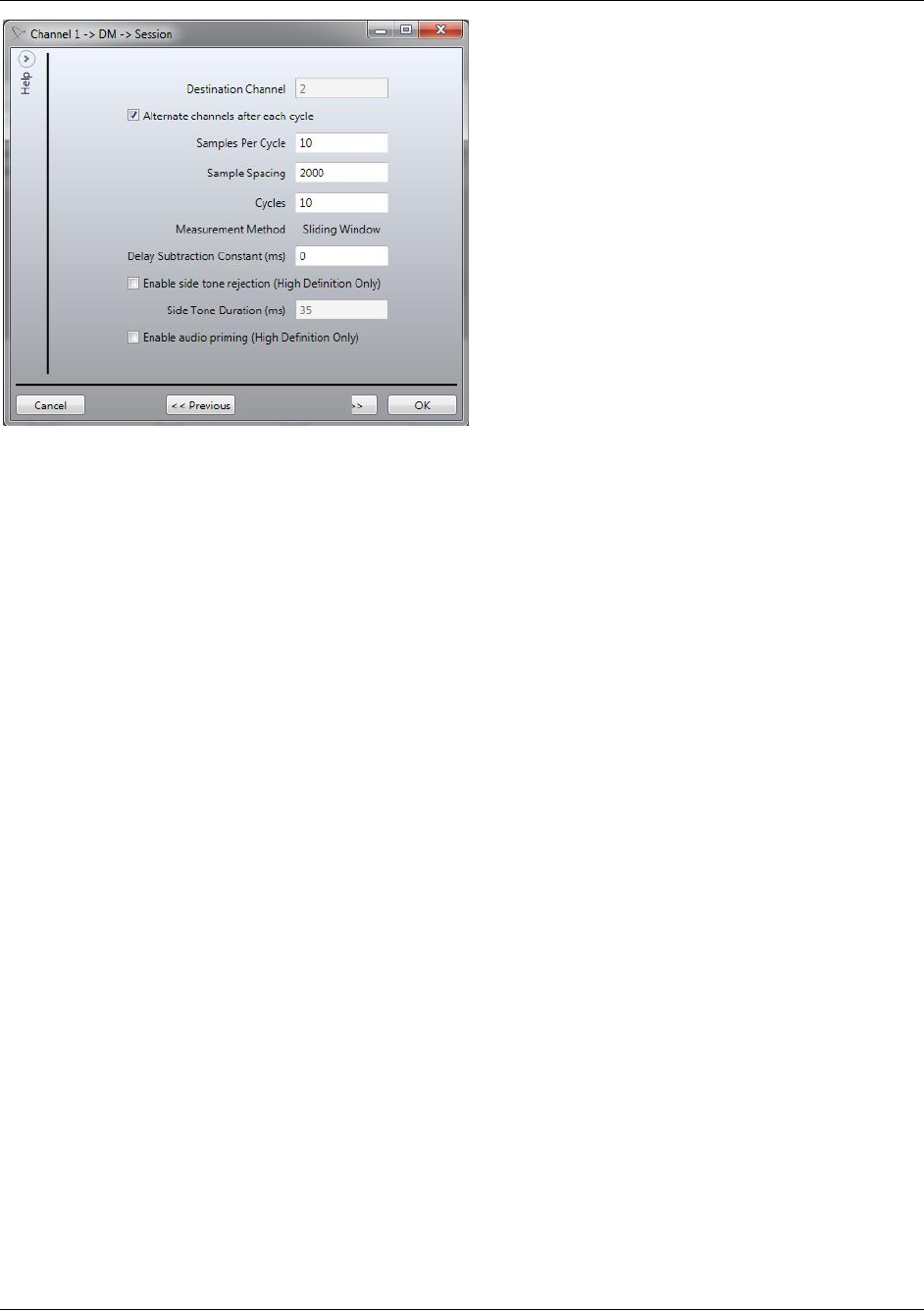User's Manual Part 2

Nomad User’s Manual Chapter 9 – Voice Quality Configuration Options
Copyright © Spirent Communications, Inc. 2013 132
Figure 9-14 - Voice Delay Task Session Dialog
Spirent recommends leaving the default values for the remaining items in the Session
dialog. Maintaining the default parameters ensures consistency across tests for
benchmarking purposes. Definitions of each parameter are provided here for informational
purposes:
o Alternate channels after each cycle: With this option checked, the Nomad
channel that is sourcing audio will alternate between each cycle.
o Samples Per Cycle: The number of measurements to take for each Voice Delay
Task cycle.
o Sample Spacing: The time in milliseconds between each sample. For example, a
test configured for 10 samples per cycle with sample spacing set to 1000 will result
in 10 samples collected with 1 second between each sample.
o Delay Subtraction Constant: This value is used to modify the delay results by a
fixed number. This would be utilized if testing were being done on a particular test
system where it is known that a process on the test server is introducing a known
artificial delay that should not be taken into account in the results.
o Enable side tone rejection: In some test configurations, one phone may be used
with a special cable to function as both the origination and destination channel by
sourcing audio to a server that echoes the audio back. In these cases, some phones
echo back audio with a minimal delay directly to the speaker before sending it to the
server. This setting, in combination with the Side Tone Duration, will ensure that
this side tone will not be measured as the delay. This setting may not be necessary
on all phones with side tone present. Side tone rejection is only enabled on the HD
interface.
o Side Tone Duration: Duration in ms after start of audio sourcing to ignore received
audio as side tone.
o Enable audio priming: With this option enabled, Nomad will source 5 seconds of
audio to the channel prior to starting each cycle of delay measurements. This is
required in some cases to make sure that the phone is ready to take delay
measurements.
Place a call from Handset 1 to Handset 2. The incoming call must be manually answered.
Start a new test.










